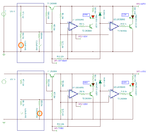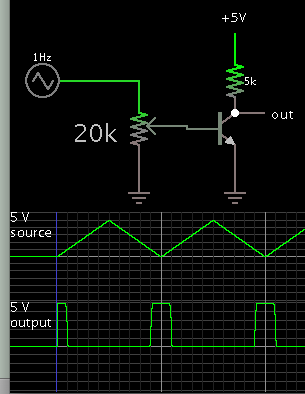Tuppe
Member level 2
Hello!
I need to tap in some extra functionalities to resistor divided buttons.
Normally I have 5V:
0.6V when I press button 1
2V when I press button 2
I need to switch separate transistor for both buttons. The imput impedance also has to be high so that I don't mess up the internal voltage dividers and cause wrong buttons presses.
I thought this was a simple problem, but after 4 hours of trying to achieve this, I'm stumped and I have to ask for help. I have zener diodes, op amps, mosfets, bjts etc. at my disposal.
One of my solutions was to:
1. Flip the polarity so I have 0V referenced to 3V and 4.3V for button 2 and 1 respectively.
2. Have mosfet triggered with 3V, which is bypassed using 3.3V zener, which changes the mode to button 2.
I didn't get it to work. Any method is fine for me. I'm used to being Arduino n00b so I could solve this using Attiny85, but I really think this could be solved using proper engineering of basic discrete components.
Thank you for reading!
I need to tap in some extra functionalities to resistor divided buttons.
Normally I have 5V:
0.6V when I press button 1
2V when I press button 2
I need to switch separate transistor for both buttons. The imput impedance also has to be high so that I don't mess up the internal voltage dividers and cause wrong buttons presses.
I thought this was a simple problem, but after 4 hours of trying to achieve this, I'm stumped and I have to ask for help. I have zener diodes, op amps, mosfets, bjts etc. at my disposal.
One of my solutions was to:
1. Flip the polarity so I have 0V referenced to 3V and 4.3V for button 2 and 1 respectively.
2. Have mosfet triggered with 3V, which is bypassed using 3.3V zener, which changes the mode to button 2.
I didn't get it to work. Any method is fine for me. I'm used to being Arduino n00b so I could solve this using Attiny85, but I really think this could be solved using proper engineering of basic discrete components.
Thank you for reading!


